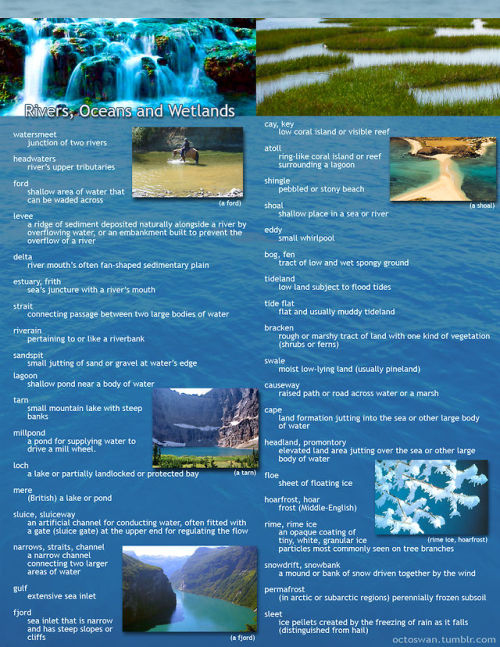That Rolling Stone Article About Chappell Roan... The Bits About The Shit She Went Through Are Already
That Rolling Stone article about Chappell Roan... the bits about the shit she went through are already wild, but what really gets me is when the article starts listing. every. single. singer. who reached out to her, worried, to commiserate, to give tips, to agree that the harassment of fame is indeed hell. I'm like. "So y'all agree?? All of y'all agree being famous is horrible???" Good LORD.
Fellow stars have reached out to see if she’s OK. Charli XCX was one of the first to do so (..). Eilish has been keeping tabs on Roan (...). Hayley Williams DM’d her, offering to chat with Roan anytime. Katy Perry told her to never read the comments. Lorde gave her a helpful list of things to do at an airport to fly under the radar. The band Muna hosted her for dinner. Miley Cyrus invited her to a party. Lady Gaga has passed along her phone number (...). Roan went on walks and grabbed coffees with Lucy Dacus and Julien Baker. Their boygenius bandmate Phoebe Bridgers came over to Roan’s just to hang, commiserating on how fandom behavior has become increasingly “abusive and violent.” Sabrina Carpenter, who’s also had a shockingly massive year, suggested they meet up and unpack their summers. “We’re both going through something so fucking hard … she just feels like everything is flying, and she’s just barely hanging on,” Roan says. “It was just good to know someone else feels that way.” Backstage at the Vic Theatre in Chicago, Roan flashes her phone to show a lengthy email from Mitski she received that morning. “I just wanted to humbly welcome you to the shittiest exclusive club in the world, the club where strangers think you belong to them and they find and harass your family members,” it reads.
I?? MEAN???
More Posts from Quandrixing and Others
just overheard my wife spelling something on the phone and i shit you not saying the words “E as in Eeyore” i am on my hands and knees wailing screaming crying pleading and begging people to learn the NATO phonetic alphabet

How to avoid White Room Syndrome
by Writerthreads on Instagram
A common problem writers face is "white room syndrome"—when scenes feel like they’re happening in an empty white room. To avoid this, it's important to describe settings in a way that makes them feel real and alive, without overloading readers with too much detail. Here are a few tips below to help!
Focus on a few key details
You don’t need to describe everything in the scene—just pick a couple of specific, memorable details to bring the setting to life. Maybe it’s the creaky floorboards in an old house, the musty smell of a forgotten attic, or the soft hum of a refrigerator in a small kitchen. These little details help anchor the scene and give readers something to picture, without dragging the action with heaps of descriptions.
Engage the senses
Instead of just focusing on what characters can see, try to incorporate all five senses—what do they hear, smell, feel, or even taste? Describe the smell of fresh bread from a nearby bakery, or the damp chill of a foggy morning. This adds a lot of depth and make the location feel more real and imaginable.
Mix descriptions with actions
Have characters interact with the environment. How do your characters move through the space? Are they brushing their hands over a dusty bookshelf, shuffling through fallen leaves, or squeezing through a crowded subway car? Instead of dumping a paragraph of description, mix it in with the action or dialogue.
Use the setting to reflect a mood or theme
Sometimes, the setting can do more than just provide a backdrop—it can reinforce the mood of a scene or even reflect a theme in the story. A stormy night might enhance tension, while a warm, sunny day might highlight a moment of peace. The environment can add an extra layer to what’s happening symbolically.
Here's an example of writing a description that hopefully feels alive and realistic, without dragging the action:
The bookstore was tucked between two brick buildings, its faded sign creaking with every gust of wind. Inside, the air was thick with the scent of worn paper and dust, mingling with the faint aroma of freshly brewed coffee from a corner café down the street. The wooden floorboards groaned as Ella wandered between the shelves, her fingertips brushing the spines of forgotten novels. Somewhere in the back, the soft sound of jazz crackled from an ancient radio.
Hope these tips help in your writing!

old guard
dash is dead im teleporting to the past
https://www.tumblr.com/dashboard?max_post_id=606474489540042752





I made these as a way to compile all the geographical vocabulary that I thought was useful and interesting for writers. Some descriptors share categories, and some are simplified, but for the most part everything is in its proper place. Not all the words are as useable as others, and some might take tricky wording to pull off, but I hope these prove useful to all you writers out there!
(save the images to zoom in on the pics)

look at these cool map brushes i found!
As someone that has a new, complex set of food allergies, thank you for this.
So due to food allergies and other nonsense, the standard "we're out of..." grocery store pads aren't helpful for me - they have a ton of stuff if them that nobody in my house consumes and because I have to do my shopping at 3 stores the organization of the pads isn't terribly useful.
So I made my own as a whiteboard and stuck it on the fridge.

It's divided into 3 main categories: perishable foods, shelf-stable foods, and foods for specific individuals in the house.
All of us eat veggies and eggs and peanut butter, but large bastard is the only one who eats frozen pizza and sandwich rolls. All of us eat tofu and carrots, but I'm the only one who needs bread from a specific store and eats lunch meat.
This makes it easy for me to tell at a glance where shopping needs to be done (if I need a bunch of stuff then we have to go to trader Joe's, but if all we need are staples we can go to aldi; if we're low on a lot of pantry items but don't need any produce we can go to walmart).
The way that I put together the board is by figuring out the stuff that had most often necessitated a trip to the grocery store for just that one item. I can't tell you how many times I have started getting ready to cook and then had to run out and get onions because I forgot that we were out of onions.
Now if I'm down to one or two onions i put a dot on the board and the next time i go shopping i get onions. When i open the last bottle of tamari or bag of coffee, i put a dot on the board.
It's also a really handy list to have while getting ready to shop because we can stand in front of it and use it as a reminder to *check* what we're low on. Do we need milk? Open the fridge and figure out if we'll run out before the next time we go shopping. Does tiny bastard need more peas to reward her for taking her insulin? Open the freezer before we gather up the shopping bags to find out.
Then it's super easy to take a photo and go shopping, and when we get back to erase the dots for stuff we got but leave the dots for stuff from another store or that was out of stock.
I've been using system for a few months now and it has been very helpful for preventing food waste and for reducing the number of trips we take to the grocery store, both of which save us money.
It's made out of a small whiteboard (about 9x14 inches) that i glued magnets to. The list items are written in permanent marker and the dots are dry erase marker. I put dots in the center of the boxes because if you overlap permanent marker with dry erase, it will wear away the permanent marker.
Anyway. This system has helped me, maybe it will be helpful for other folks as well.
-
 folk-dolle liked this · 1 week ago
folk-dolle liked this · 1 week ago -
 fruitandfelines liked this · 1 week ago
fruitandfelines liked this · 1 week ago -
 soap-reblogs reblogged this · 1 week ago
soap-reblogs reblogged this · 1 week ago -
 devilsskettle liked this · 1 week ago
devilsskettle liked this · 1 week ago -
 twfanmily4life12 reblogged this · 1 week ago
twfanmily4life12 reblogged this · 1 week ago -
 autumn-crow13 liked this · 1 week ago
autumn-crow13 liked this · 1 week ago -
 princessyndrome liked this · 1 week ago
princessyndrome liked this · 1 week ago -
 chimney-begins reblogged this · 1 week ago
chimney-begins reblogged this · 1 week ago -
 chimney-begins liked this · 1 week ago
chimney-begins liked this · 1 week ago -
 bowlinggwithmargo reblogged this · 1 week ago
bowlinggwithmargo reblogged this · 1 week ago -
 the-new-flesh reblogged this · 1 week ago
the-new-flesh reblogged this · 1 week ago -
 dustsansm2 liked this · 1 week ago
dustsansm2 liked this · 1 week ago -
 peter-is-a-girl liked this · 1 week ago
peter-is-a-girl liked this · 1 week ago -
 itoentea reblogged this · 1 week ago
itoentea reblogged this · 1 week ago -
 npqn liked this · 1 week ago
npqn liked this · 1 week ago -
 thestarsinme liked this · 2 weeks ago
thestarsinme liked this · 2 weeks ago -
 bluepainfulpine liked this · 2 weeks ago
bluepainfulpine liked this · 2 weeks ago -
 maloure liked this · 2 weeks ago
maloure liked this · 2 weeks ago -
 okjooonfire liked this · 2 weeks ago
okjooonfire liked this · 2 weeks ago -
 selfservesoftservebitches liked this · 2 weeks ago
selfservesoftservebitches liked this · 2 weeks ago -
 veryhelplesslesbian reblogged this · 2 weeks ago
veryhelplesslesbian reblogged this · 2 weeks ago -
 jxsterr liked this · 2 weeks ago
jxsterr liked this · 2 weeks ago -
 changelingart liked this · 3 weeks ago
changelingart liked this · 3 weeks ago -
 skidjdhehrb reblogged this · 3 weeks ago
skidjdhehrb reblogged this · 3 weeks ago -
 skidjdhehrb liked this · 3 weeks ago
skidjdhehrb liked this · 3 weeks ago -
 disclaimer-performatico reblogged this · 3 weeks ago
disclaimer-performatico reblogged this · 3 weeks ago -
 disclaimer-performatico liked this · 3 weeks ago
disclaimer-performatico liked this · 3 weeks ago -
 accidental-child reblogged this · 3 weeks ago
accidental-child reblogged this · 3 weeks ago -
 gaymakima reblogged this · 3 weeks ago
gaymakima reblogged this · 3 weeks ago -
 bearthecaptain reblogged this · 3 weeks ago
bearthecaptain reblogged this · 3 weeks ago -
 interrogatethekat liked this · 3 weeks ago
interrogatethekat liked this · 3 weeks ago -
 capnkrys liked this · 3 weeks ago
capnkrys liked this · 3 weeks ago -
 wispsers liked this · 3 weeks ago
wispsers liked this · 3 weeks ago -
 lionyacrowroar reblogged this · 3 weeks ago
lionyacrowroar reblogged this · 3 weeks ago -
 aliceandthejoker reblogged this · 3 weeks ago
aliceandthejoker reblogged this · 3 weeks ago -
 marlowmalenk liked this · 3 weeks ago
marlowmalenk liked this · 3 weeks ago -
 hunginggrapes liked this · 3 weeks ago
hunginggrapes liked this · 3 weeks ago -
 sasquapossum liked this · 3 weeks ago
sasquapossum liked this · 3 weeks ago -
 sugarrrush liked this · 3 weeks ago
sugarrrush liked this · 3 weeks ago -
 overlord-surgeus reblogged this · 3 weeks ago
overlord-surgeus reblogged this · 3 weeks ago -
 overlord-surgeus liked this · 3 weeks ago
overlord-surgeus liked this · 3 weeks ago -
 donut-despair reblogged this · 3 weeks ago
donut-despair reblogged this · 3 weeks ago -
 donut-despair liked this · 3 weeks ago
donut-despair liked this · 3 weeks ago -
 r0tt3n-esque liked this · 3 weeks ago
r0tt3n-esque liked this · 3 weeks ago -
 delriddlesblog liked this · 3 weeks ago
delriddlesblog liked this · 3 weeks ago -
 goat-and-a-pig reblogged this · 3 weeks ago
goat-and-a-pig reblogged this · 3 weeks ago -
 goat-and-a-pig liked this · 3 weeks ago
goat-and-a-pig liked this · 3 weeks ago -
 oops-i-did-it-again-again reblogged this · 3 weeks ago
oops-i-did-it-again-again reblogged this · 3 weeks ago





